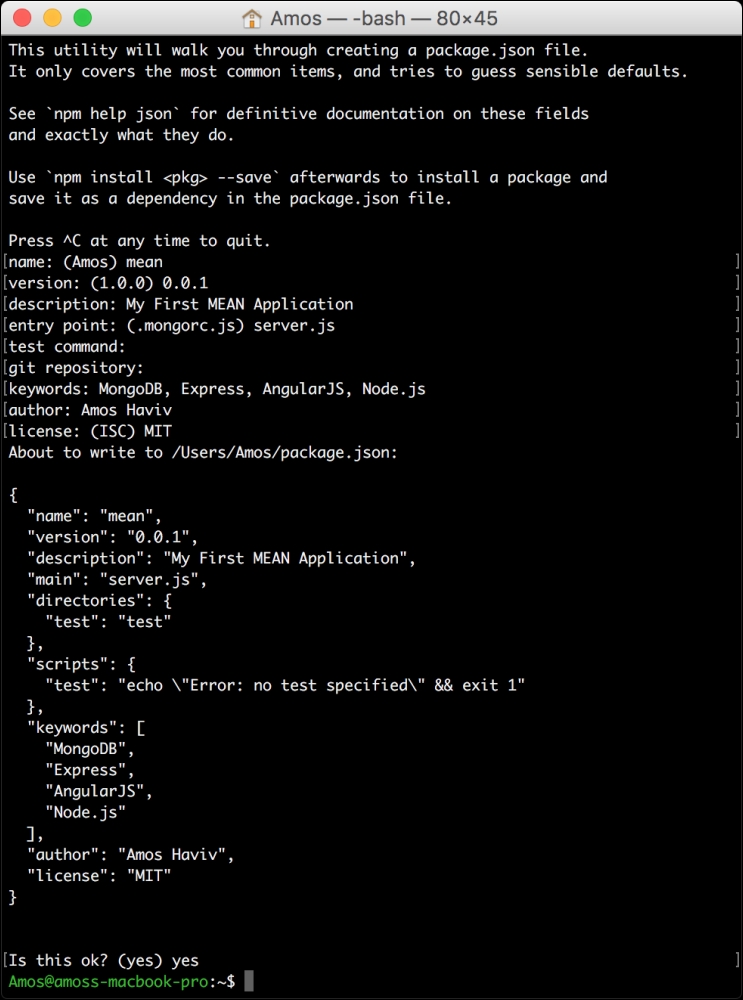

- #CREATE NEW DIRECTORY FOR ANGULARJS IN MAC INSTALL#
- #CREATE NEW DIRECTORY FOR ANGULARJS IN MAC CODE#
If you want to learn to build enterprise-level websites efficiently with Bootstrap, this book is for you.

Change this to '0.0.0.0' to access the server from outside.A) 1535 essential words for complete preparation b) Easy pronunciation guide c) Synonyms, Antonyms and Parts of speech d) Sample sentences e) The definitive guide to essential vocabulary for GRE GRE Master Wordlist: 1535 Words for Verbal. # This should return the minimal set of values that should be in the session

Skip("Add a hash of attributes invalid for your model") Skip("Add a hash of attributes valid for your model") As you add validations to Group, be sure to # This should return the minimal set of attributes required to create a valid To make this spec pass you’ll of course need to add a validation: # app/models/group.rb # you've limited to :test, :development, or :production.īefore = Group.new(name: "Ben Franklin Labs") # Require the gems listed in Gemfile, including any gems Require File.expand_path('./boot', _FILE_) We can tell RSpec not to create these spec files: # config/application.rb When you generate scaffolds from now on, RSpec will want to create all kinds of spec files for you automatically, including some kinds of specs (like view specs) that in my opinion are kind of nutty and really shouldn’t be there.
#CREATE NEW DIRECTORY FOR ANGULARJS IN MAC INSTALL#
(This might be a good time to commit this project to version control.) Creating our first resourceĪdd gem 'rspec-rails' to your Gemfile (in the test group) and run: $ bundle install Now we’ll create a resource so we have something to look at through our AngularJS app. $ cd fake_lunch_hubĬreate our PostgreSQL user. $ rails-api new fake_lunch_hub -T -d postgresql $ gem install rails-apiĬreating a new Rails::API project works the same as creating a regular Rails project. First, if you haven’t already, install Rails::API. I’ve tried to do Angular projects with full-blown Rails, but I end up with a bunch of unused views, which feels weird. Instead of regular Rails we’re going to use Rails::API. I also created a branch specifically to match up with this tutorial here. Since Lunch Hub is a real project with its own actual production code, I use a different project here called “Fake Lunch Hub.” You can see the Fake Lunch Hub repo here. The idea with Lunch Hub is that office workers can announce in the AM where they’d like to go for lunch rather than deciding as they gather around the door and waste half their lunch break.

There’s a certain sample app I plan to use throughout called Lunch Hub. I definitely recommend buying the book because it really is very helpful. This tutorial is meant to be a supplement to Ari’s book, not a replacement for it. I had to do a lot of extra Googling and head-scratching to get all the way there.
#CREATE NEW DIRECTORY FOR ANGULARJS IN MAC CODE#
I did find that book very helpful and I thought it was really well-done, but it seems to be a little bit out-of-date by now and I couldn’t just plug in its code and have everything work. The best resource I could find out there was Ari Lerner’s Riding Rails with AngularJS. I wrote this tutorial because I had a pretty tough time getting Rails and Angular to talk to each other as an SPA. If you’d prefer Angular/Rails/Gulp/CoffeeScript/Jade, check out this newer post. If you’re interested in Angular/Rails/Grunt/JavaScript/HTML, read on.


 0 kommentar(er)
0 kommentar(er)
